The drill bit
ralph klimek Nov 2009
keywords: repairing a fractured drill bit, method
abstract: method for an add hoc repair of a shattered large drill bit suitable for home use, without precision machinery
The
motivation for this simple project arose because I needed to drill many
5/8ths holes in metal. Many years ago I purchased a
fragment of 5/8ths drill from a flea market. This fragment could just
barely be held in a hand brace, but this was barely workable.
When I went to Bunnings to buy a 5/8ths reduced shank drill bit,
they were about A$50 which costed more then the entire project.
I took a second look at my drill fragment to see what value I
could add.
What it needed was a reduced shank, and to be really
usefull as a drill the shank had to be collinear. It has to be usefull
in my electric drill so that added extra requirements for collinearity
and balance. I had a good stock of 1/2inch steel shaft which
could be welded to the drill fragment...but how to weld it so the whole
thing was true ,colinear, and resonably well balanced.
Hold it in a lathe!
This would be the proper answere, except I dont have one and the
prospect of ever being able to own one is getting somewhat remote.
What could I do that did not require a lathe?
The images
show the drill bit being welded in a purpose built wooden jig. This
primative arrangement was able to hold the drill bit and shaft with
sufficient resilience and accuracy to permit this "new remanufactured"
drill to be a success.
I do not have access to precision layout
or machine tools. Four bits of hardwood had to be drilled with a
collinear hole, enlarged and mounted on a sturdy base...all while
maintaining absolute collinearity. The orientation of the string
of holes did not really matter.
First I tried to lay things out
by measurement , marking and cutting. Total failure. Wood is not
like metal, it has a mind of its own and wood will displace a
penetrating drill bit laterally, so no matter how hard you try,
holes never really line up and remain true.
This describes
a repeatable procedure . The sequence must be exactly followed.
Absolute Collinearity is what we are trying to create and preserve in
an envoironment denied of precision.
procedure
Get
4 pieces of wood that have been resonably well dressed. Number
them and mark to preserve orientation. Clamp them all between heavy
plates in a sturdy vice and drill one 1/2inch hole (in this case)
through the stack. The direction of the hole is not that
important. Immediately force through a length of 1/2inch shaft
and remove the skewered stack of blocks from the vise and space and
place them on the mounting board. Do not remove the shaft ! The shaft is holding the alignment.
Now
drill and screw the blocks to the mounting board. Do not remove
the 1/2inch shaft during this procedure or you will loose the alignment
and you must start again with fresh material !
Remove the two
blocks that will be holding the drill bit. At this point we
still have perfect alignment because we drilled and screwed the blocks
with the shaft in place, maintaining the alignment. Now drill these removed blocks out to
the required size. This part of the process may loose some of the
precision, but we have two blocks, so on average the alignment is
preserved.
Remount the two enlarged hole blocks in their positions. Did you mark and number your blocks ?
With a grinder dress the end of your drill fragment with a nice bevelled edge ready for welding.
Force
the new shank and drill bit fragment into the jig. If you
have done all the above right they will be perfectly aligned.
Weld
a small bead, turn the drill around and weld a small bead on exactly
the other side. This is important . If you try to do the whole
extent of the weld, the thermal expansion forces will bend your drill like a banana.
Now begin to fill the remaining seam with weld metal.
This procedure will set fire to the jig but that does not matter, the jig is disposable.
High
speed tungsten steel drill metal welds very well. You might
like to anneal the completed weld with a gas flame as the weld could be
quite brittle. Mine welded very nicely to mild steel shaft. Make
sure that as far as humanely possible that there are no slag
inclusions. This is a safety matter!
My
repaired drill was used with success, luck even allowed it to be
nicely balanced. I still would not use it in a high powered drill press
due to the risk of the weld fracturing under load, but it is perfectly
suitable for hand held drill use in light material.
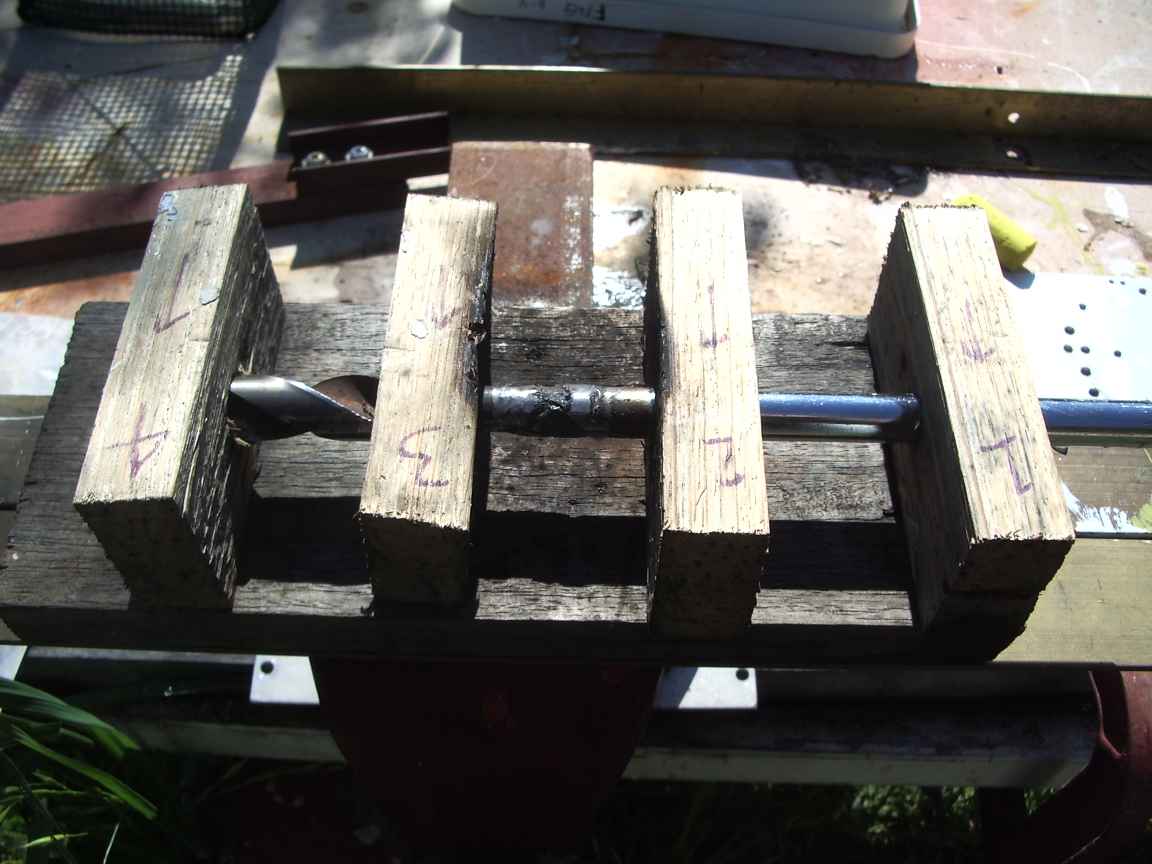 | 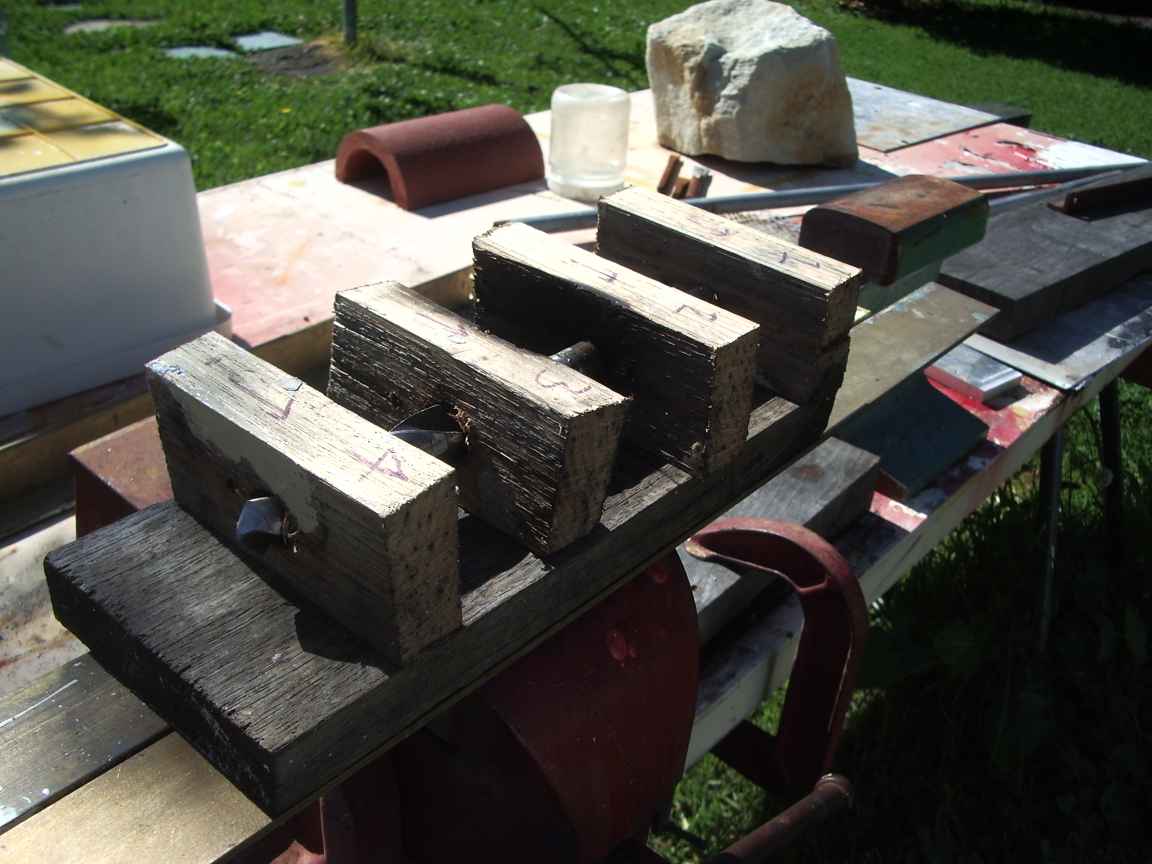 |
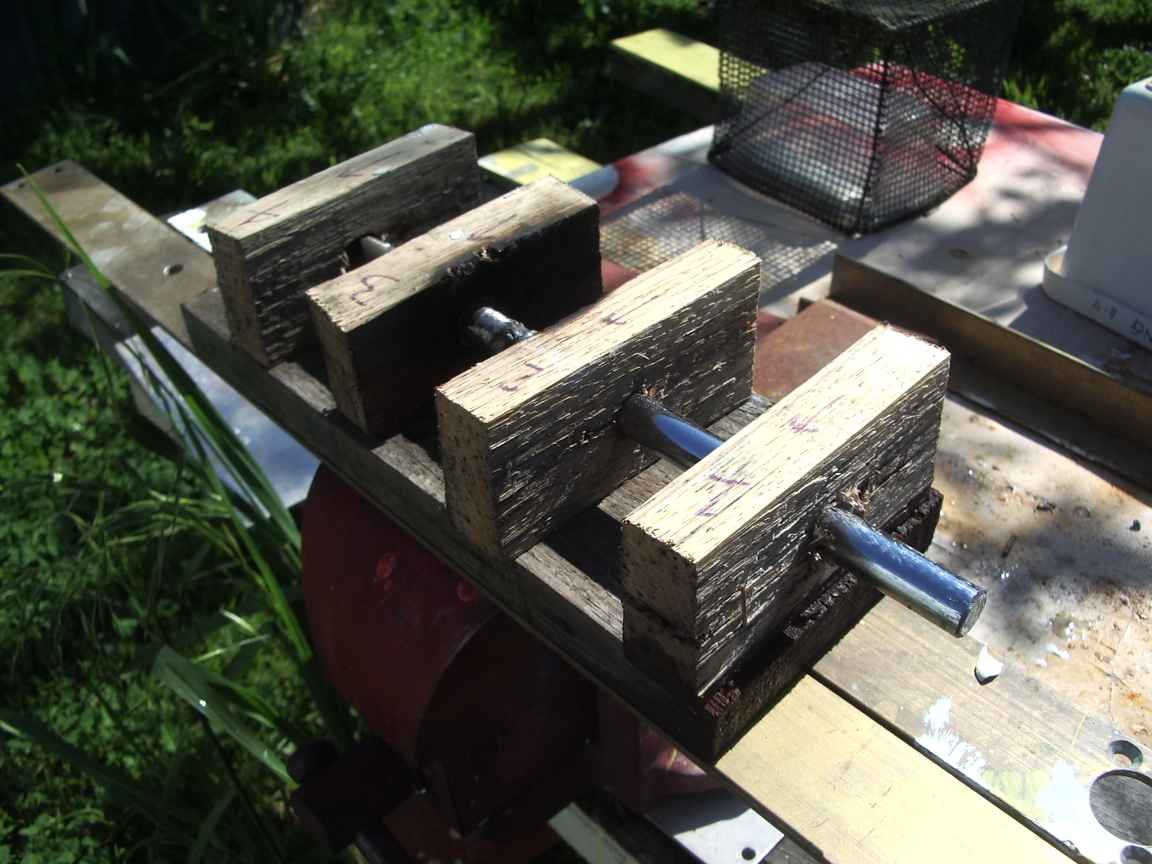 | 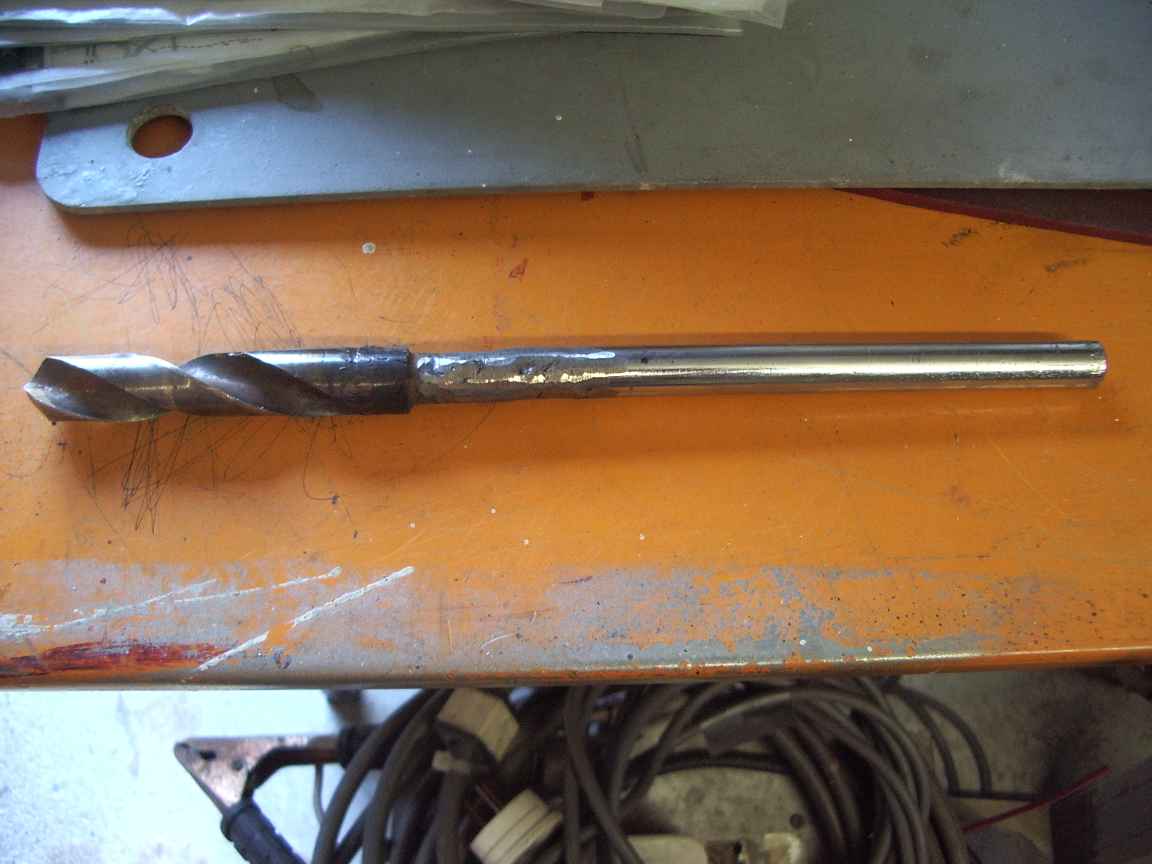 |
| temporary wooden jigging | repair completed |
this project was brought to you by the welder-o-doom
homepage
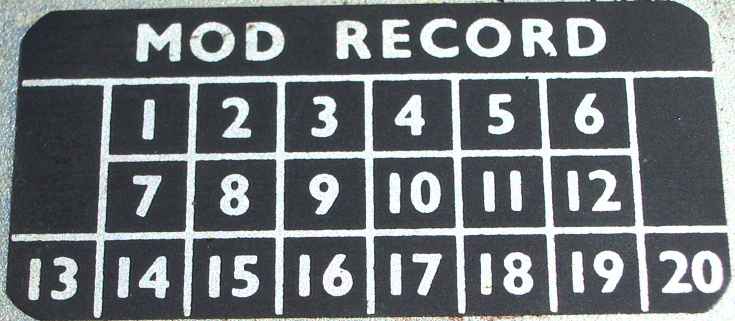
page created Mon Nov 23 18:55:25 EST 2009;Fri Feb 5 18:16:58 EST 2010









